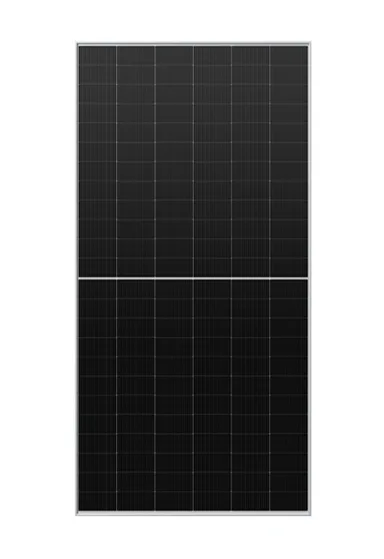Solar energy has become an essential solution for those seeking sustainable and cost-effective alternatives to traditional energy sources. As awareness of environmental issues rises, so does the demand for solar energy solutions. In this blog, we’ll break down the costs involved in installing solar panels, the potential savings they offer, and why WonVolt’s advanced solar panel technology is a smart investment.

What Are the Initial Costs of Solar Panels?
People always ask us first: “How much is this going to cost me upfront?” Fair question. Prices swing, but understanding the pieces helps.
Average Price Per Watt
Right now, good panels land between $0.25 and $0.40 per watt before installation. That’s the panel only—think of it as the raw ingredient.
Factors Influencing Panel Pricing
Size, cell type, and brand reputation move the needle. N-type TOPCon cells (what we use in our 54JWU series) cost a bit more than older PERC, but they squeeze out extra power in hot summers and cloudy days. Shipping distance and order volume matter too; a full container from Hefei to Rotterdam beats a single pallet every time.
WonVolt’s Affordable 450 W Full Black Model
Our WV-54JWU450-H8NS lists at $0.31 per watt for 5 MW orders. That’s $139.50 per panel. Sleek all-black look, 23 % efficiency, and a 30-year linear warranty. For a typical 6 kW home system you’d need 14 panels—under $2,000 for the panels alone.
How Do Installation Expenses Add Up?
Panels are just part of the bill. The rest is labor, racks, wires, and permits. Skip any of these and you risk headaches later.
Labor and Permitting Fees
A decent crew charges $1.00–$1.50 per watt in the U.S. or €0.80–€1.20 in Europe. Permits run $200–$800 depending on the city. Add a structural engineer if your roof is old—another $300.
Mounting and Wiring Costs
Rails, clamps, and conduit add $0.30–$0.50 per watt. Bifacial panels like our 600 W need a gap under them for rear-side gain, so the racking runs a touch higher—about 10 % more.
Professional Setup for WonVolt Bifacial Panels
Our field teams do site surveys before any quote. For the WV-72KUN605-H8NS, we recommend 150 mm clearance and reflective gravel if you’re ground-mounting. That extra 15–25 % rear-side gain pays the racking premium in year one.
What Maintenance Costs Should You Expect?
Solar is famous for “set it and forget it,” but nothing lasts forever without a glance now and then.
Routine Cleaning Expenses
In dusty areas, a yearly hose-down costs $100–$200 for a home system. Rain handles most rooftops.
Inspection and Repair Budgets
A pro check every five years runs $150. Inverters need replacement around year 12—budget $1,200 for a 6 kW string unit.
Low-Maintenance WonVolt 600 W Bifacial Option
Our dual-glass bifacials shrug off hail up to 25 mm and carry IP68 junction boxes. The 30-year power warranty means you’re still above 87 % output when your kids are paying the bill. Less cleaning, fewer worries.
How Much Can You Save on Energy Bills?
This is the fun part—watching the meter spin backward.
Monthly Electricity Reductions
A 6 kW system in central Germany or the U.S. Midwest averages 700 kWh monthly. At $0.13/kWh, that’s $91 shaved off the bill. Sunny Spain? Closer to $120.
Long-Term Utility Savings
Over 25 years, the same system saves $25,000–$35,000 before inflation. Net metering or feed-in tariffs sweeten the pot in many places.
High-Efficiency Savings with WonVolt 740 W Panel
Commercial roofs love our WV-66KUN740-H12NS. One panel covers almost 4 m² and pumps flops 740 watts. A 1 MW array needs only 1,352 panels—fewer racks, less labor, same land.

Are There Incentives and Rebates Available?
Governments still hand out cash to go solar. Miss them and you’re leaving money on the table.
Federal Tax Credits
The U.S. ITC sits at 30 % through 2032. A $20,000 system drops to $14,000 after the credit.
State and Local Rebates
California, New York, and several EU countries offer $0.10–$0.50 per watt upfront. Some utilities pay for excess summer power.
Incentive Compatibility for WonVolt Products
All three panels carry TUV and CE marks, so they qualify everywhere the rules allow. Our warranty PDF is one click away if the rebate office asks for proof.
Which WonVolt Products Offer the Best Value?
Not every roof is the same. Here’s the quick cheat sheet.
450 W Full Black for Residential Use
Perfect for city homes where looks matter. Fits tight roofs, blends with dark tiles, and still hits 23 % efficiency.
600 W Bifacial for Versatile Applications
Farms, carports, flat commercial roofs—any spot with reflected light. Expect 10–20 % extra yield without moving parts.
740 W Bifacial for Large-Scale Savings
Utility fields and big-box stores. Fewer panels mean lower balance-of-system costs and faster install times.
How Long Until You See a Return on Investment?
Crunch the numbers once, sleep easy for decades.
Payback Period Calculations
A $20,000 residential system with incentives pays back in 6–8 years at current rates. Commercial 740 W arrays often hit 4–5 years thanks to scale.
Energy Output Projections
Our TOPCon cells degrade under 0.4 % per year after the first. Year 30 still delivers 87.4 % of day-one power—verified by the linear warranty.
Accelerated ROI with WonVolt Warranties
The 12-year product and 30-year power guarantee isn’t marketing fluff. It’s bankable collateral when you sell the house or refinance. Buyers love paper that says the roof still makes money in 2055.
Going solar isn’t cheap, but it’s simpler than most think. Start with a free site survey—our engineers visit, measure shade, and quote firm numbers. Visit our site to book yours. The sun’s free; the savings are real.
FAQ
Q1: Do I need to clean WonVolt bifacial panels more often?
A: No. The dual-glass design sheds dirt like a windshield. One rain or a quick rinse each spring is plenty.
Q2: Can I mix the 450 W and 600 W panels on the same roof?
A: Better not. Different currents confuse the inverter. Stick to one model per string for max output.
Q3: What if hail cracks a panel after year 12?
A: Our 12-year product warranty covers manufacturing flaws. Hail is an insurance claim, but the 5400 Pa front load rating laughs at golf-ball ice.

